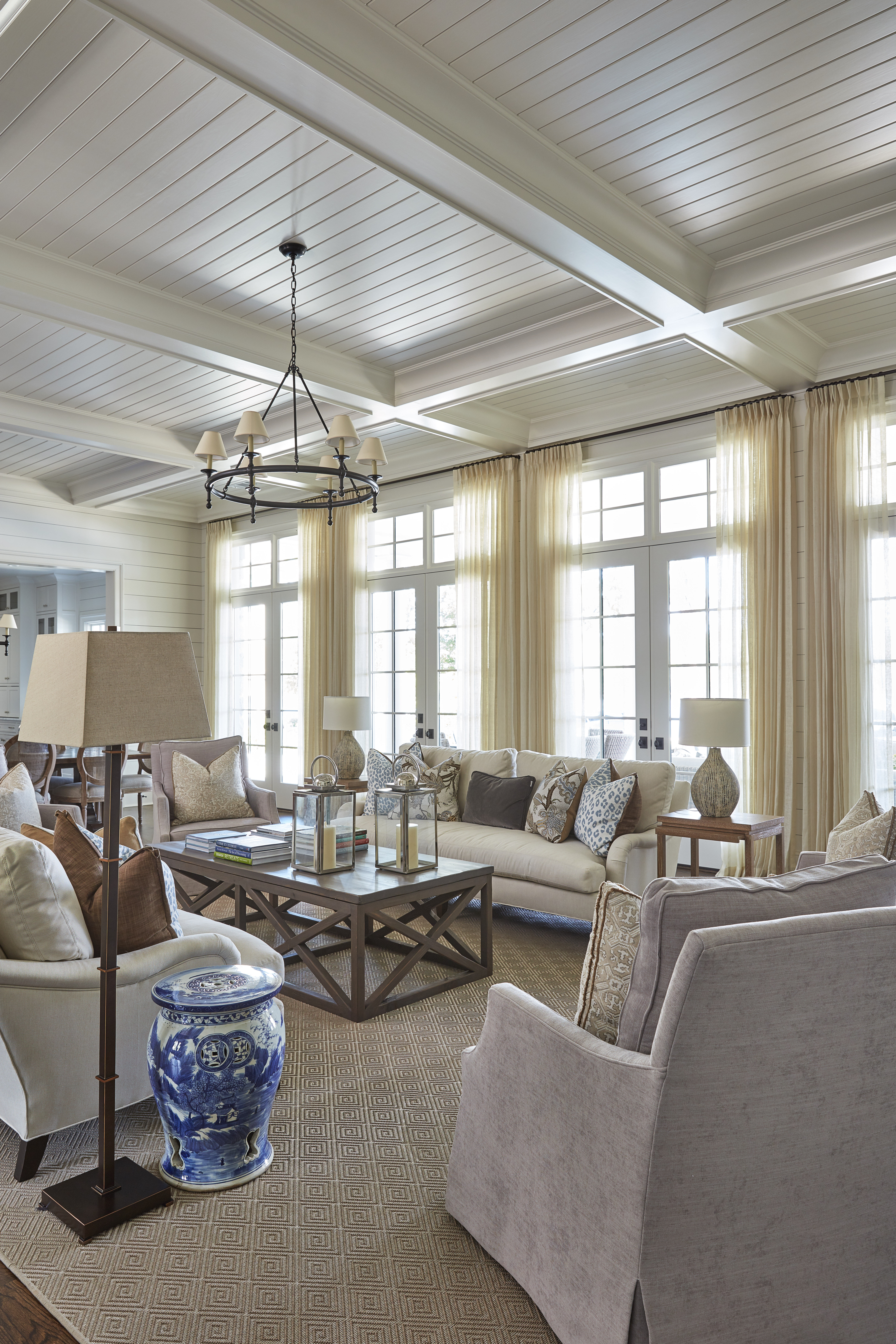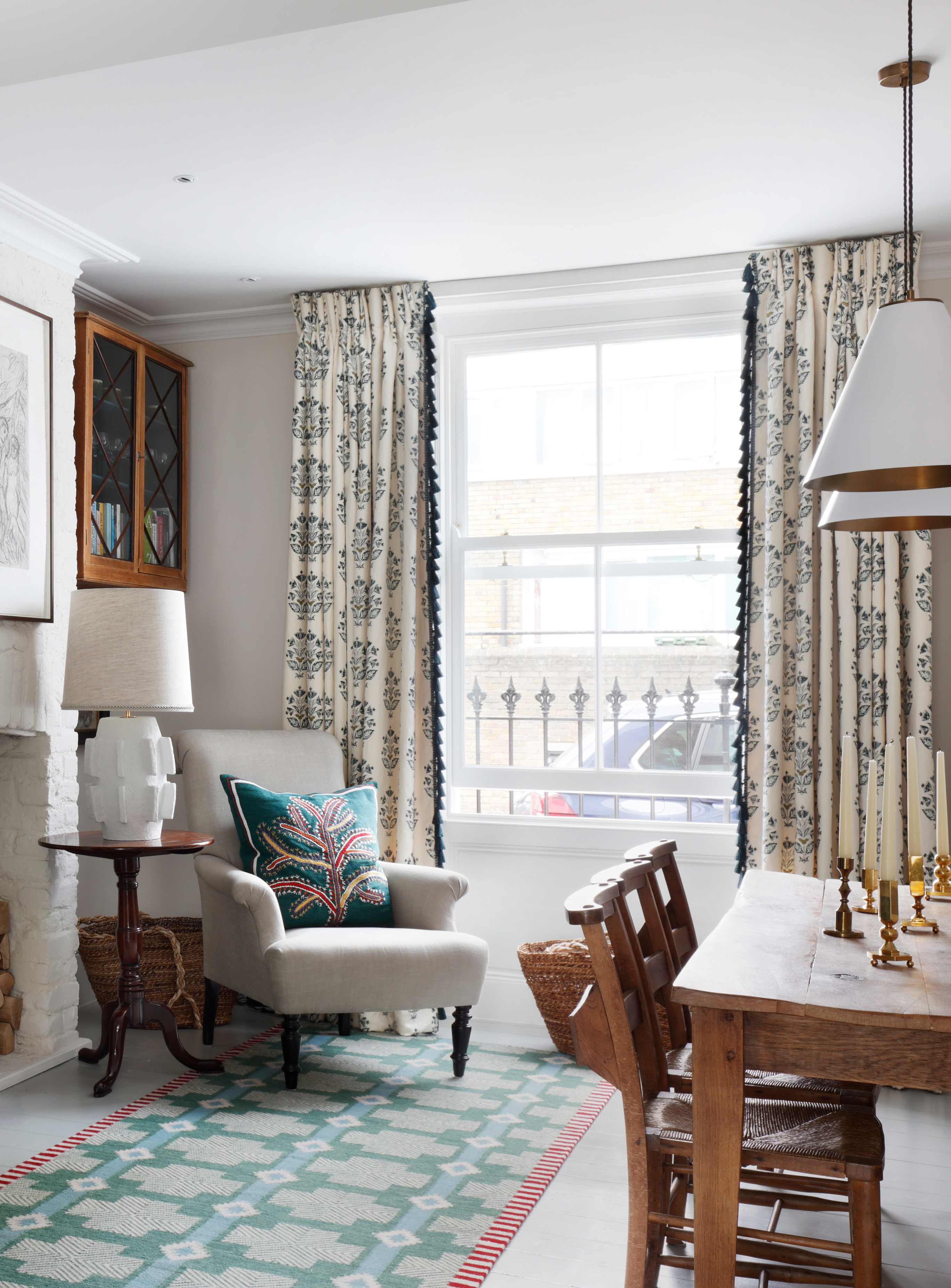How high should I hang my curtains? The rules designers follow
Follow the lead of the professionals for maximum style


A crucial – but sometimes neglected – decision when dressing windows is how high you should hang your curtains.
Window treatment ideas can be showstoppers in fabulous colors and patterns or quiet frames for a beautiful view, and perform many tasks – from blocking light or softening it, to creating privacy, and aiding in keeping a room at the right temperature. But if you don't get the curtain rod height right, they won’t look their best.
There isn’t a single answer to the question, but there definitely are rules interior designers and curtain pros use and that you can, too, and we’re sharing them here.
How high should I hang my curtains?

To ensure curtain ideas have maximum style, curtain panels need to be the correct width, and the curtain length has to be right, too. But whether you opt for a length that means curtains skim the floor or puddle on to it, to calculate the fabric quantity required, you need to know how high to hang the curtains and therefore where to position the rod.
The answer will depend on aspects such as the height of a room’s ceiling and the effect you want to create, and these are the guidelines from the experts.
The general rule for curtain height
There are some exceptions, which we’ll get into below, but a rule of thumb for interiors decisions is always useful. The guideline for curtain height?
‘If your ceiling allows it, you’ll want to go higher than the window frame,’ says Kelly Simpson, senior director of design and innovation at experts in blinds, shades, shutters, and drapes Budget Blinds. ‘You can go 4 to 6 inches above the window to achieve the right curtain length.’
‘If you have 6 to 12 inches between the ceiling and window frame, hang the curtain midway between the ceiling and the top of the window frame.
How to use curtain height to make a ceiling seem higher
One of the clever strategies interior designers use is to change the apparent proportions of a room, and to make windows look bigger, is to cheat the height at which curtains are hung by hanging higher than the recommended measurements above. Doing so has the power to make a ceiling look higher, something that’s especially useful for spaces that are less lofty than you’d like.
‘If you are looking to elongate the space I would mount drapery high above the door or window header,’ says Noelle Isbell of Noelle Interiors. ‘Look at the surrounding elements in the space to possibly help you decide what to align with. It may make sense to run as high as just shy of the ceiling height.’
How high to hang curtains when ceilings are very high

There are exceptions to every rule, as Kiley Jackson and Aileen Warren of Jackson Warren Interiors explain.
‘We take curtains up to just below the crown [the area where the walls and ceiling meet] – while still maintaining a relationship with the window,’ says Kiley. ‘Obviously it wouldn’t make sense to take the drapery to the crown if the ceilings were 20 feet tall,’ adds Aileen.
Instead, if your room has a soaring ceiling, use the rule of thumb and look at a height of around 4 to 6 inches above the window trim.
Curtain height for unusual window shapes

If your room has arched windows – how to measure then?
‘The rules don’t change,’ says Lucy Searle, global editor in chief of Homes & Gardens. ‘Just use the highest part of the arch as your starting point for measuring. What’s crucial, however, is that there may be windows of conventional shape elsewhere in the room as well, and curtain heights around the room should be consistent from one window shape to another.
'Or, if, for instance, you want to have café curtains, hang the curtains at the height of the window just before the window starts to curve.'
How much taller should curtains be than the window?

As a minimum, curtains should be at least 2 inches taller than the window, in other words, there should be a gap of 2 inches between the window trim and the curtain rod.
However, it’s preferable that curtains are between 4 and 6 inches taller than the window. This will lead the eye upwards, giving the impression of a room with generous ceiling height.
Should you hang curtains as high as possible?
As a general rule, you should hang curtains as high as possible as it will change the proportions of the space favorably. The drapery also needs to be associated with the window itself, however, so have a distance of 4 to 6 inches above the window frame in mind for hanging the rod, or halfway between the ceiling and the window trim where the distance between the ceiling and it is 6 to 12 inches.
If the top of the window frame is close to the ceiling, consider choosing a ceiling or top-fixing curtain rod as an alternative to a wall-mounted rod since this will create a more spacious feel.
Sign up to the Homes & Gardens newsletter
Design expertise in your inbox – from inspiring decorating ideas and beautiful celebrity homes to practical gardening advice and shopping round-ups.

Sarah is a freelance journalist and editor. Previously executive editor of Ideal Home, she’s specialized in interiors, property and gardens for over 20 years, and covers interior design, house design, gardens, and cleaning and organizing a home for Homes & Gardens. She’s written for websites, including Houzz, Channel 4’s flagship website, 4Homes, and Future’s T3; national newspapers, including The Guardian; and magazines including Future’s Country Homes & Interiors, Homebuilding & Renovating, Period Living, and Style at Home, as well as House Beautiful, Good Homes, Grand Designs, Homes & Antiques, LandLove and The English Home among others. It’s no big surprise that she likes to put what she writes about into practice, and is a serial house renovator.
-
 5 surprising but brilliant ways to clean with old socks – from perfectly buffing stainless steel to deterring pests naturally and more
5 surprising but brilliant ways to clean with old socks – from perfectly buffing stainless steel to deterring pests naturally and moreTackle dust in tricky corners, clean your mirrors and even banish bad odors with those rogue single socks
By Andy van Terheyden Published
-
 How to grow astilbe – expert advice on cultivating this shade-tolerant flowering perennial
How to grow astilbe – expert advice on cultivating this shade-tolerant flowering perennialShade-tolerant and pest-resistant - astilbe are hardy and tough perennials that can thrive in many settings
By Ellen Wells Published